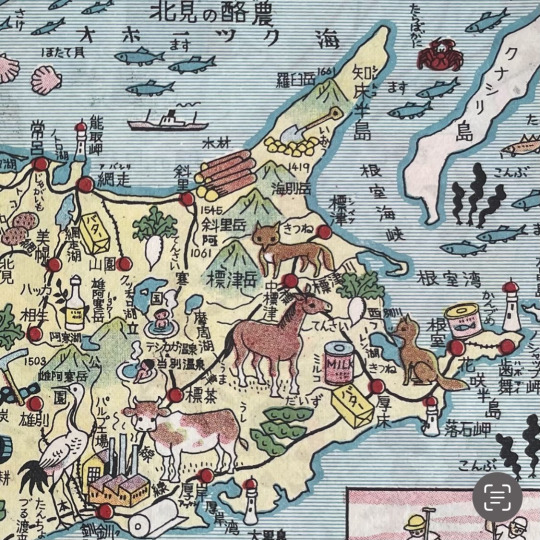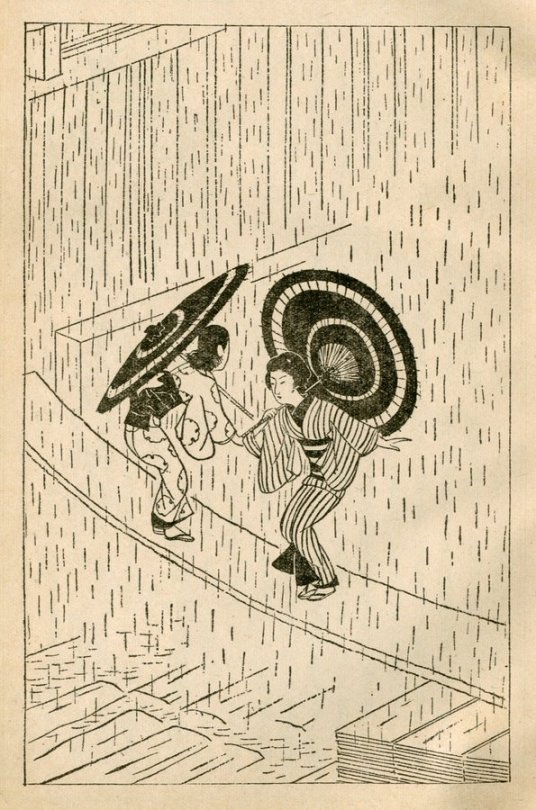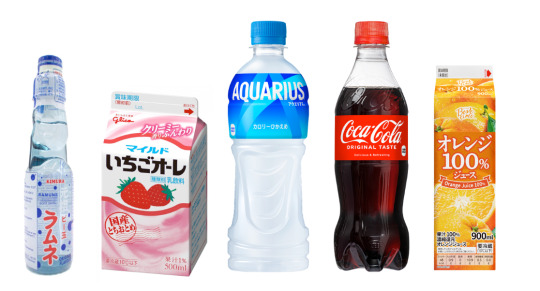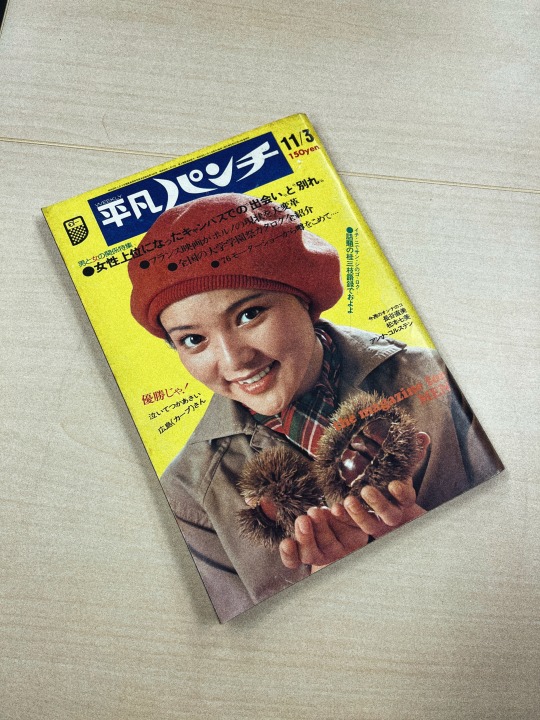#昭和4年
Explore tagged Tumblr posts
Text

本日のお休みは冠水公園で能登半島地震被災ペット支援のイベントに参加…🐕
皆さん本当にありがとうございます🙇♂️
まだまだ先は見えませんが頑張って行きたいと思います😭
#4月29日#月曜日#ASKCAFE#昭和の日#祝日#定休日#お休み#カラオケ#ダーツ#BAR#石川県#金沢#片町#セキビル#3階#がんばろう能登#令和6年能登半島地震#能登半島地震被災ペット支援#飲み会#二次会#歓送迎会#予約受付中
0 notes
Text




Photo article entitled ‘23 people who stood out at train stations’ from the Japanese women's weekly magazine, Josei Seven, 1969. The first two pictures are of Shinjuku Station, the third of Tokyo Station and the fourth of Ueno Station. The scenery of the stations may be nostalgic for those who miss them.
昭和44年(1969年)の女性セブンより「駅で目立った23人」という写真記事です。 1-2枚目が新宿駅、3枚目が東京駅、4枚目が上野駅。駅の風景など懐かしい方には懐かしいかもしれません。
124 notes
·
View notes
Text
So I have a (somewhat goofy) kanji name to use for websites that don't accept kana names, because that's not that uncommon even in the year of our Lord 2024. But I recently encountered something really unusual, something I hadn't seen in nigh on 15 years of living here: a website that required my birth year in the Japanese calendar! As a required field. Wild. Do you know what year you were born?
You probably know that in addition to the Western calendar 西暦 [せいれき], Japan also uses 和暦 [われき] (or 年号 [ねんごう]), which are eras named after the reigning emperor. So when you have to write the date in any official documentation, you often see this.

(Cropped from a random medical intake form on Google Images.)
This a standard field for birthdate, or 生年月日 [せいねんがっぴ]. The characters 明・大・昭・平・令 each stand for an era.
明 for 明治 Meiji, 1868–1912
大 for 大正 Taishō, 1912–1926
昭 for 昭和 Shōwa, 1926–1989
平 for 平成 Heisei, 1989–2019
令 for 令和 Reiwa, 2019 to present
(Plus sometimes 西 for 西暦 )
As an example, I've filled it out for a fire rabbit (a 1987 baby! a very good year), born on tumblr's favorite holiday.

That's Heisei 62 for the year 年, November for the month 月, and 5th for the day 日, giving an age of 36 years (36歳 [さんじゅうろくさい]) and 4 months (4ヶ月 [よんかげつ]).
So what's to stop you from just writing the Western year? Generally, nothing! Lots of people do it (I think). Just make sure to write all four digits to avoid confusion with the one- or two-digit Japanese years and you should be okay....... Except for this one, once in 1.5 decades form that actually made it the required format. I wish I'd thought to take a screenshot! Now I can't even remember where it was because I'm working 12-hour days and my brain is broken!
In conclusion, you can look your birth year up here! The site may look pretty barebones, but it's very useful for converting Japanese numbers, traditional units, etc.
P.S. - I was going to end this post with a birth year poll (because I love polls), but once I started to make it, I realized that anyone who isn't Heisei or Shōwa is basically either a preschooler or a centenarian and is probably not on this website. Oh well.
149 notes
·
View notes
Text

Katsuzi Matsumoto
Frontispiece from the April 1949 issue of the magazine ‘Blue Sky’. ‘You are coming’.
松本かつぢ
雑誌「青空」昭和24年4月号の口絵 「あなたは来る」
41 notes
·
View notes
Photo

単3乾電池の「単」の意味とは
乾電池には幾つかの大きさがあり、日本では単1・単2・単3・単4と呼ばれる。この「単」とは何の意味なのか。
乾電池はその形状・電圧などが規格化されていて、「単1形」から「単6形」までと「9V形」がある。このような電池を「単位電池」と言い、これは「1つで済む電池」という意味である。
1934年(昭和9年)頃まで使用されていた電池は主に「積層電池」という複数の乾電池を1つにまとめたものだった。最近では見かけなくなったが、これは複数の電池を直列につなぎ、高い電圧にしたものである。当時、懐中電灯やラジオなどの乾電池を使用していた電化製品は消費電力が大きく、1本の乾電池ではまかないきれなかった。そのため、乾電池は複数の電池をひとまとめにした「積層電池」として販売された。
しかし、戦後、電化製品の省エネルギー化と乾電池の性能向上により、乾電池1本でも作動できるようになった。この1本の乾電池は複数を積み重ねる「積層電池」に対して、1つで済む電池という意味で「単位電池」と呼ばれた。これを略して「単1電池」「単2電池」という言葉が生まれ、さ��に略されて「単1」「単2」などと呼ばれている。
ちなみに「単3乾電池」や「単3」と呼ばれる電池には「単3形」と表記されている。また、これらは日本だけの呼び方・表示方法で、アメリカでは単1形は「D」、単2形は「C」、単3形は「AA」、単4形は「AAA」と表記されている。
今では当たり前のように使っている乾電池だが、世界で初めて乾電池を発明したと言われているのは日本人で、時計技師だった屋井先蔵(やい さきぞう、1864~1927年)とされる。
屋井は1885年(明治18年)に「湿電池」で動作する「連続電気時計」を発明したが、当時の電池は手入れが必要なこと、冬場は電池の液が凍結するため使用できなくなることなどの問題があった。そこで、屋井は電池の開発に取り掛かり、1887年(明治20年)に「乾電池」の発明に成功した。その後、日本国内の乾電池シェアを掌握し、屋井は「乾電池王」とも呼ばれた。
(単3乾電池の「単」の意味とは | 雑学ネタ帳から)
38 notes
·
View notes
Photo

this is a pictorial map of Hokkaido Shiretoko Peninsula and eastern Hokkaido in 1956 from "Children's Yearbook" by Nobarasha. Text by 野ばら社|昭和4年創業の出版社 @nobarako
445 notes
·
View notes
Text
中年世代の一部に存在する「極端にアニメを嫌う人」 背景にあった「社会的事件」とは? かつてアニメは「テレビまんが」と呼ばれ、あくまで子供が見るものとされていた映像作品でした。 今では子供から大人、高齢の世代でも最新のアニメを楽しんでいる人がいます。 一方で、40代後半から50代半ばの世代の一部に、「極端にアニメを嫌う層」が存在しています。 それには、かつて社会を震撼させたあの事件が大きく影響しているのではないでしょうか。 「宮崎勤事件」……当時この事件の影響を受けた人間にとっては、口にするにも文字にするにも大変なエネルギーが必要です。 1988年(昭和63年)から1989年(平成元年)にかけて、東京都および埼玉県で計4人の幼女、女児が殺害される痛ましい事件がありました。宮崎勤はその犯人です。 なぜ、ここにアニメがからんでくるのかというと、宮崎勤は「アニメ好きのロリコンである」という報道が行われたからです。 その結果、当時アニメ好きだった少年少女たちが、ある日突然「社会の敵」とされて「アニメ好きを倒すのは正しい行動だ」と考えた生徒たちにより凄惨ないじめを受けました。 特にこの時期に中高生だった世代、つまり現在の40代後半から50代半ばの世代には、アニメを嫌う人が少なくありません。 問題は、そのマスコミの報道が「捏造」だった点です。 宮崎勤は6000本ものビデオテープを所有しており、その点は当時の水準から考えると確かに異常ではありました。 しかし、部屋に踏み込んだ記者の告白によると、その大半は『ドカベン』や『リボンの騎士』『ゲゲゲの鬼太郎』など、ごく一般的なアニメだったことが明らかになっています。 またホラービデオマニアとの報道もあり、犯人の異常性が強調されていました。 しかし、ホラー作品の所有数もわずかでした。 『ギニーピッグ2 血肉の華』という作品がコレクションのなかにあると報道されたのがきっかけで、「ギニーピッグ」シリーズは廃盤となりましたが、押収されたのはコメディ調の『ギニーピッグ4 ピーターの悪魔の女医さん』であり、宮崎自身は『ギニーピッグ2』を観ていないと供述しています。 また、多数の雑誌が散乱する部屋のなかで、マスコミ的にはおいしい被写体がなかったため、わざわざ埋もれていたポルノマンガを上に置き直して撮影するという、作為的な情報操作があったことも明らかになっています。 当時の若い男性の部屋を漁れば、エロさを感じさせる本など1冊くらい見つかるものでしょう。 もちろん、映像作品について「好き」「嫌い」と判断することは、個人の価値観や体験に左右されるものであることは明白です。 しかし、「宮崎事件の報道」に影響されてアニメ嫌いになった、というのではれば、もしかするとアニメを否定する気持ちは自分のものではなく、30年以上前の報道によって植え付けられたものかもしれません。 その点を踏まえてもなお、アニメを否定するのであれば、せめて先入観を捨てて純粋な映像作品としてアニメを鑑賞したうえで、自分自身の気持ちから生まれた言葉で批評すべきではないでしょうか。
中年世代の一部に存在する「極端にアニメを嫌う人」 背景にあった「社会的事件」とは? | マグミクス https://magmix.jp/post/238203
78 notes
·
View notes
Text

「木場」(「改造」昭和15年4月号掲載)幸田真治『小村雪岱随筆集』より
158 notes
·
View notes
Text
長徳寺 蘇民祭 2025年の開催日は3月2日(日) 参加受付朝8時より 一般参加行事はすべて午前中終了

長徳寺 蘇民祭 ₄ 取り主は中止期間をはさんで4年連続で紫波町の会社員・畠山真さん(45)興田神社の蘇民祭でも取主だった人。奥田神社蘇民祭は2025年も引続き中止中。

恍惚とした表情の人が...
長徳寺 蘇民祭 ふんどしのタイプはバラバラだよ
コロナで中止していた蘇民袋争奪戦「袋ねじり」も4年ぶりに2024年から再開している 「ねじり」は「揉み合い」の意味みたいや

響沁太鼓千代組 「兄ちゃん! 男前やし褌似合うと思うよ~!」
蘇民祭伝承( https://chotokuji.org/festival/ より引用)
明治27年12月4日付で油島(現在一関市花泉町)から不動尊を当時の20円で譲り受けた際に「蘇民祭」も付いてきたと言い伝えられている。昔は正月27日~28日にかけて行われた行事であり、27日はおこもり、28日午前1時より別当登り、2時より鬼子登り、3時より柴燈木(ヒタキ)登り、4時より袋ねじりの順に行われていた。 昭和24年~30年の7年間、蘇民袋争奪戦をしていた。午前4時頃に不動尊から袋を出し、山門をくぐり前の川までもみ合った(ねじった)。不動尊堂内に、争奪戦証拠の木札(取り主、参加者氏名)が掲示されている。 現在は平成26年の不動尊鎮座120年を記念し蘇民袋争奪戦の復活に より、全国から裸に下帯姿の男達が集まり水垢離や柴燈木登り、そして蘇民袋争奪戦がお祭りを最高に盛り上げる。子供達は鬼子の面を背負い行列に参加し、参拝者は蘇民袋の中から出てきたコマ木を御守に持ち帰る。
そして来賓及び一般の方に精進料理を振る舞う。特に「お不動さんのけんちん汁」は昔から好評で、毎年皆さんに喜んでいただいている。町内外からの参拝者は勿論、地元の年配者から子供達まで全員で参加出来るお祭りである。
令和7年度 蘇民祭開のお知らせ( https://chotokuji.org/festival/ より引用)


時宗 不退山 長徳寺 〒029-3521岩手県一関市藤沢町保呂羽字宇和田18
疫病退散願い肉弾戦 「袋ねじり」再開 藤沢・長徳寺蘇民祭【一関】|Iwanichi Online 岩手日日新聞社 2024年3月5日付
一関市藤沢町保呂羽の長徳寺(渋谷真之住職)の蘇民祭は3日、同寺で行われた。新型コロナウイルスの影響で中止が続いていた蘇民袋の争奪戦「袋ねじり」を4年ぶりに再開し、県内外から集まった裸男らが行事を通して疫病退散などを祈願した。
国無形民俗文化財「岩手の蘇民祭」の一つで、同祭保存協力会(不動尊蘇民祭精進講本部)が主催。もともと同市花泉町にあった不動尊を1894(明治27)年に同寺が譲り受け、蘇民祭も一緒に引き継いだ。蘇民祭はコロナ禍も規模を縮小して実施しており、不動堂の解体・再建が始まる今年は、2年がかりの130周年記念事業の皮切りとしても行われた。
裸男は、北は青森県、南は香川県から20~60代の39人が参加。近くの川での水垢離(みずごり)や、井桁に組んで火を付けた木に上がる柴燈木(ひたき)登りなどで身を清め、不動堂を参拝。本堂前で縁起物の小間木を来場者らに向けてまくと、袋ねじりが始まった。肉弾戦の結果、紫波町の会社員畠山真さん(45)が最後まで袋の結び目を放さず、中止時期を挟んで4年連続の取り主となった。
16 notes
·
View notes
Photo

ザテレビジョン 1987年4月17日号
中山美穂
(XユーザーのM.N.M ✻ 中山美穂さん: 「#中山美穂 さんありがとう #昭和 62年4月17日号 #ザテレビジョン #ママはアイドル! https://t.co/CqAmuYP28N」 / Xから)
11 notes
·
View notes
Text






Capítulo 1 introducción: Sean bienvenidos japonistasarqueológicos a una nueva entrega, de arqueología nipona en esta ocasión vamos a presentar a uno de los arqueólogos japoneses más notables se llama Tadahiro Aizawa ¿Quién fue? Y ¿Qué aportó a la ciencia arqueológica? Dicho esto pónganse cómodos que empezamos. - Tadahiro Aizawa nació el 21 de junio durante la era Taisho (1912-1926), nació en el distrito de Ebana en Tokio, desde la temprana edad de los 8 años ya tenía interés por las reliquias antiguas, a los 9 años de edad sus padres se habían divorciado en los años 30. A la edad de 11 se mudó a la ciudad de Kiryu, Gunma, en 1938 a la edad de 12 años ingresó a la Escuela nocturna Shotoku Jinjo de la ciudad de Tokio durante esa fecha japón estaba en plena guerra contra china en la llamada guerra sino-japonesa, cabe destacar que la era showa empezó en 1926 y terminó en la de década de los 80. - Espero que os haya gustado esta presentación y viene de camino los capítulos 3 y 4 de la serie japón en su arqueología poco a poco lo iré trayendo que pasen una buena semana y nos vemos en próximas publicaciones de historia y arqueología nipona. - Un cordial saludo. - 第 1 章の紹介: 日本考古学の新しい���事へようこそ考古学者、今回は最も注目すべき日本の考古学者の 1 人、彼の名前は相沢忠宏. 彼は誰だった?そして、彼は考古学に何を貢献したのでしょうか?そうは言っても、気楽に始めましょう。 - 相沢忠宏は大正時代(1912-1926)の6月21日に生まれ、東京の江花地区で生まれ、8歳の頃からすでに古代の遺物に興味を持っていました. 1930年代に離婚。 11 歳のときに群馬県桐生市に移り、1938 年に 12 歳のときに東京市の聖徳尋常夜学校に入学しました。その日、日本はいわゆる清戦争で中国と戦争をしていました。 -日本人は、昭和が1926年に始まり、1980年代に終わったことに注意する必要があります. - このプレゼンテーションと考古学における日本シリーズの第 3 章と第 4 章が進行中であることを願っています。少しずつお届けします。良い週をお過ごしください。また、日本の歴史と考古学の今後の出版物でお会いしましょう。 - 心のこもった挨拶。 - Chapter 1 introduction: Welcome archaeologists to a new installment, of Japanese archaeology, this time we are going to present one of the most notable Japanese archaeologists, his name is Tadahiro Aizawa. Who was he? And what did he contribute to archaeological science? With that said, make yourselves comfortable, let's get started. - Tadahiro Aizawa was born on June 21 during the Taisho era (1912-1926), he was born in the Ebana district of Tokyo, from the early age of 8 he already had an interest in ancient relics, at the age of 9 his parents they had divorced in the 1930s. At the age of 11 he moved to the city of Kiryu, Gunma, in 1938 at the age of 12 he entered the Shotoku Jinjo Night School in the city of Tokyo during that date Japan was at war against China in the so-called Sino War -Japanese, it should be noted that the showa era began in 1926 and ended in the 1980s. - I hope you liked this presentation and chapters 3 and 4 of the series Japan in its archeology are on the way, little by little I will bring it, have a good week and see you in future publications of Japanese history and archaeology. - A cordial greeting.
#日本#文化#写真#歴史#先史時代#群馬#県#地理#ユネ���コ#相沢忠弘#考古学#Japan#culture#photos#history#prehistory#Gunma#prefecture#geography#unesco#TadahiroAizawa#archaeology
49 notes
·
View notes
Text
罠英語・Trap Words pt 1
和製英語(わせいえいご)are Japanese words that have some origin in English, but have been appropriated by the Japanese speaking community. Often, if converted from katakana to English, they won’t be real English words (which can sometimes lead to funny mistranslations on signs).
シャーペン → shar-pen?? ❌ → mechanical pencil ✅
トランプ → trump?? ❌ → playing cards ✅
ベビーカー → baby car?? ❌ → stroller/pram ✅
However, there is a subcategory of 和製英語 which is particularly insidious, as a japanese learner. I’m gonna call them 罠英語 - trap words. They appear to be a normal English word simply converted into kanakana, but although they look like a regular old loan word, they are actually a Japanese misinterpretation or reinterpretation of an English word.
マンション → mansion ❌ → condominium/apartment ✅
The most well known example is probably マンション. Each of these words has a history which explains how they became trap words. In マンション’s case, it was business. In the 1960s, Japanese developers were building luxury housing complexes, but wanted to differentiate them from other housing complexes that had a low-class image, like public housing.¹ As far as I can tell, it wasn’t just one company, and マンション wasn’t a brand name. They created a whole new word, borrowing from English. Since then, the word マンション evolved to have a wider and wider scope, now including not just luxury housing complexes but any housing complex.

ジュース → juice ❌ → juice/soft drink/sports drink/mixer ✅
This one drives me up the wall because of how different it is from English. ジュース is a huge umbrella term which includes Coke, Aquarius, ramune, flavoured milk(!!), and actual orange juice. It does NOT include coffee, tea, anything with alcohol, or lemon juice(!!). Why not lemon juice? Because ジュース kinda means “beverage”. You don't usually drink lemon juice straight, so it’s not ジュース. Instead, you call lemon juice レモン汁. There are plenty of recipes on the japanese recipe sharing website Cookpad for レモンジュース, and most of them involve diluting actual lemon juice in carbonated water and mixing it with sugar or honey.²
Apparently, up until the 1960s (〜昭和40年), the word ジュース was not regulated, which meant Japanese brands were free to label fruit flavoured drinks as ジュース, even if they had no actual fruit juice in them. This changed in late 1967, when, thanks to pressure from consumer groups, the Japanese Agricultural Standard Law (JAS法) was revised to include a regulatory definition of the word ジュース: 「果汁100%のもの以外は、『ジュース』という名称で販売できない」(100% fruit juice).³ Even the wikipedia article for ジュース defines it using the JAS definition.⁴ However, the word ジュース had already entered common usage before the law came into effect, and it’s still used today to mean any non-coffee, non-tea, non-alcoholic, sweet beverage, especially ones sold from a vending machine. I believe the prevalence of vending machines may have led to the spread of this word. Another reason ジュース has not been adopted in common use may be that Japanese already has a word for fruit juice - 果汁. Languages dislike redundancy, so it’s natural that one of the two would have changed to have a different meaning. Many native Japanese speakers are unaware of the regulatory definition⁵, (and even then, regulations shouldn’t and don’t dictate how language is used in everyday conversation) so it’s important to be careful!
ノート → note ❌ → notebook ✅
In Japanese, it’s rare that a common word will be longer than 4 kana sounds long (aka morae). Similarly in English, we don’t end to use words that are over 4 syllables long very often. In English, the word “notebook” is 2 syllables, nice and short. But when you convert it into Japanese, it becomes ノートブック, a whole 6 morae! No one has time to say all that! Since English can fit multiple consonants into a single syllable but Japanese can’t, when converting to Japanese, lots of additional vowels get added in, which extends the word. That’s why loan words in Japanese tend to get abbreviated: ビル for building, リモコン for remote control, ティアキン for “Tears of the Kingdom”.⁶ It’s only natural that ノートブック would get abbreviated to ノート. It’s just an unlucky coincidence that “note” happens to be an English word as well. The word for "note" in Japanese is メモ!
This is why the Death Note is called a note, even though it’s not a note, and also gives us this slightly おかしい translation.

I’m keen to post more about these trap words since dictionaries are often quite prescriptivist about the meanings, and it’s hard to get a good idea of what the word means without talking to Japanese people. I also find the histories quite interesting. Let me know if you’re interested! I have a feeling these words (besides ジュース) may be kinda common knowledge, but I hope the explanations were interesting! I think next time I'll talk about some ones that are less commonly known.
[1]: https://www.homes.co.jp/cont/buy_mansion/buy_mansion_00137/ [2]: https://cookpad.com/search/レモンジュース [3]: https://www.meg-snow.com/customer/center/communication/pdf/center12.pdf [4]: https://ja.wikipedia.org/wiki/ジュース [5]: https://macaro-ni.jp/36654 [6]: https://en.wikipedia.org/wiki/Japanese_abbreviated_and_contracted_words
#langblr#japanese#language acquisition#language learning#linguistics#japanese language#learning japanese#language#jimmy blogthong#trap words#official blog post
156 notes
·
View notes
Text

The popular ‘Revive Your Hometown in Colour’ series [part 18], 8 March 1958, at the former Marukoshi Department Store in Musashigatsuji, Kanazawa. Children playing on the “bean train” and “aerial train” at the rooftop amusement park. [As published in the evening edition of Hokkoku Shimbun, 23 Apr 2022].
「カラーでよみがえる、ふるさと」歴代人気作【その18】 1958(昭和33���年3月8日、金沢市武蔵ヶ辻の旧丸越百貨店にて。 屋上遊園地の「豆列車」や「空中電車」に乗って遊ぶ子どもたち。 【北國新聞2022年4月23日付夕刊掲載分】
50 notes
·
View notes
Text
Made books 2024
HOMMAGE 特別号 地味なひとり旅
HOMMAGE No.4���共通ラッピング車両
HOMMAGE No.5 山手線
HOMMAGE No.6 ドラえもん電車
東急8500系 2020系がいない日常
HOMMAGE No.7 行ってみたい駅
My Train No.1 京急1000形
My Train No.2 横浜
My Train No.3 上越線
大分発金沢経由上野行き
東急8500系 サークルKの終焉
My Train 総集編 目的地は駅(Kindle版)
2024年は12冊作成しました。
・HOMMAGE 特別号 地味なひとり旅
(発売開始:サンシャインクリエイション 2024spring)
目次:山中城跡公園 / URまちとくらしのミュージアム / NTT技術史料館 / 澤乃井(小澤酒造) 豆らく、きき酒処 / 旧伊藤博久金沢別邸 / 江戸東京たてもの園 前川國男邸 / 横浜市電保存館 / 京王れーるランド / 大崎公園・披露山公園

ひとりで巡った場所を厳選して紹介。テーマがニッチだったり、開館日が極めて限定的だったり、さらには美味しい日本酒を満喫したり。 話題にしても地味でパッとしない、でもそこでの学びや感動はひとりで行くからこそ味わえないかと。
・HOMMAGE No.4 共通ラッピング車両
(発売開始:COMIC1☆24)
目次:共通ラッピング車両ガイド(JR西日本323系 / 大阪メトロ30000系 / 京阪8000系 / 近鉄9820系・近鉄5820系 / 阪急1000系・1300系 / 阪神1000系 / 大阪モノレール2000系 / キャラクターを探して / 横浜市営バス「あかいくつ」)

増殖するキャラクターラッピング車両。大規模イベント開催前に、この一冊はいかが?
・HOMMAGE No.5 山手線
(発売開始:コミティア148)
目次:数字で知る山手線 / E235系 伝統のウグイス色を受け継ぐ / ���の薄い山手線の駅/駅そば、うどんの思い出 / 山手線横断~南と北の名所~ / New brand / Natirta Express E259 / N'EX From Hachioji

東京の中心を1周60分で走る山手線。東京に行けば必ず乗る路線だが、意外と知らないことも多かったり。 そんな山手線の気になること、一緒に探してみませんか。
・HOMMAGE No.6 ドラえもん電車
(発売開始:おもしろ同人誌バザール大崎)
目次:高岡市 藤子・F ・不二雄ふるさとギャラリー / ドラえもん電車に乗ろう(DORAEMON-GO!・DORAEMON TRAM・Wrapping train) / 小田急F-trainⅠ correction / 小田急F-trainⅡ 8 month diary / 川崎市 藤子・F ・不二雄ミュージアム

今や国内問わず海外でも人気な「ドラえもん」と電車のコラボを紹介。今も走るドラえもん電車や幻のF-trainなど、藤子・F・不二雄ファン必見な一冊。
・東急8500系 2020系がいない日常
(発売開始:コミックマーケット104)
目次:朝 / 偶然 / 四季

2013~2015年の東急8500系の写真を掲載。毎朝の始業光景から、偶然な一枚、そして四季と8500系。沿線住人にとっては懐かしい光景、それ以外の方も見たことがない鉄道のシーンを見てみませんか?
・HOMMAGE No.7 行ってみたい駅
(発売開始:コミティア149)
目次:3駅連続 スノーシェルターの駅 / 首都圏のご当地発車メロディのすすめ / 旅先の変わった駅 / 食べたかった駅弁 / 復活?80年代の歌姫 / ひと夏の思い出 小田急ロマンスカーLSE

駅は旅の経由地ではなく目的地。そんな行きたくなる駅を紹介。あなたの地元の駅もあったりして。
・My Train No.1 京急1000形
(発売開始:おもしろ同人誌バザール神保町)
目次:空増結 金沢文庫 / 車体別車両図鑑 / 1000形(アルミ) 2100形 600形 同じじゃないですか!? / 体感快特!?普通浦賀行き / イエローハッピーターントレイン

総製造数500 両を越えた京急1000 形。600 形、2100 形から受け継いだ車両は、確立した技術をもとに今も進化を続けている。今回は20年以上同じ形式をつくり続けた京急のスタンダードを見ていく。
・My Train No.2 横浜
(発売開始:コミティア150)
目次:歩き鉄 汽車道・山下臨港線プロムナード / 濱の鉄道ヒストリー / リバイブ横浜市電 横浜市営バスで辿る横浜市電の旅 / SOTETSU NAVY BLUE / Seaside Line シーサイドライン / 南町田グランベリーパーク号

1872年10月14日、横浜~ 新橋に日本初の鉄道が開業した。その後もネットワークを広げ新たな鉄道が誕生したり、時代と共に消えた鉄道もあった。発祥の地で歴史を変えた鉄道を訪れる。
・My Train No.3 上越線
(発売開始:文学フリマ東京39)
目次:繁栄期の歴史 1962-1982 / 明日使える?上越線の小ネタ / ���清水トンネルの駅 土合駅・湯檜曽駅 / 過去の栄光を残す 石打駅 / SLを支えた車両の最後 DLぐんま4fine / 最後のひととき 特急ときの振り回された転属劇 / 群馬デスティネーションキャンペーンラッピング車両

上越線と言われて雪国(作 川端康成)を浮かぶ人は多いだろう。群馬と新潟を結ぶ重要な路線は、東京発着の特急が行き交っていた。時代の流れで変わってしまった路線だが、そんなかつての繁栄を探した。
・大分発金沢経由上野行き
(発売開始:文学フリマ東京39)
目次:はじまり / 大分発金沢経由上野行き / コラム 鉄道博物館で図書を読む / あとがき

昭和45年10月1日ダイヤ改正の運用表から気になる列車を見つけた。今では考えられない大分から大阪、金沢さらには上野と広範囲で運転を行っていた。なぜこの運用が出来たのか、当時を知らないからこそ気になる疑問が出て来る。新幹線のネットワークにより、縮小する在来線特急列車。今とは違う特急列車の存在を探ってみる。
・東急8500系 サークルKの終焉
(発売開始:コミックマーケット105)
目次:新生 / 大井車 / 非直車 / 幕車終焉

東急8500系写真集第三弾。2020系の導入により、変化するサークルKを中心に取り上げる。
・My Train 総集編 No.1 目的地は駅 (us / uk)
(e-book 発売開始:12/26 Thu)
目次:3駅連続 スノーシェルターの駅 / 美佐島 / 分割増結 / 復活?80年代の歌姫 / #八景シリーズ Best shot No.468 秩父八景-私鉄貨物

駅は旅の経由地ではなく目的地。そんな目的地として行きたくなる駅を紹介。意外と近くの駅があったりして。
★Can buy
メロンブックス / フロマージュブックス
★Link
Made books 2023
About(2024.10) Post:10.10 2024
Work Post:9.13 2024
#dojinshi#comic market#comitia#doujinshi my train#コミックマーケット#コミケ#コミティア#同人誌#即売会#鉄道#おもしろ同人誌バザール#同人誌My Train
14 notes
·
View notes
Text

From the 1929 Shojo Club supplement ‘Omoshiro-graph’. By Saburo Mimino. ‘Funny Zoo’.
昭和4年(1929)少女倶楽部付録「おもしろグラフ」より 耳野三郎 作「滑稽動物園」
25 notes
·
View notes
